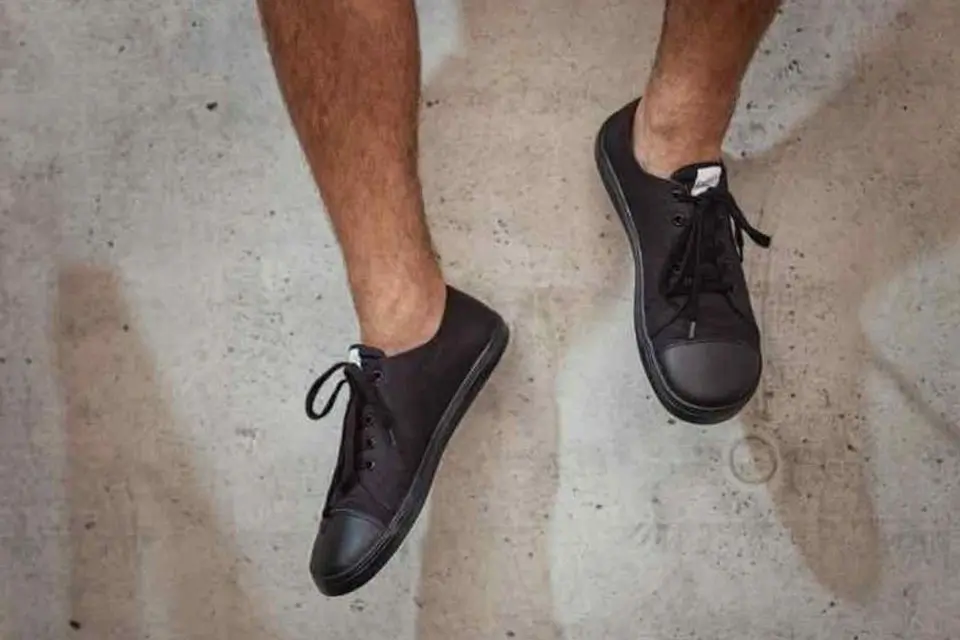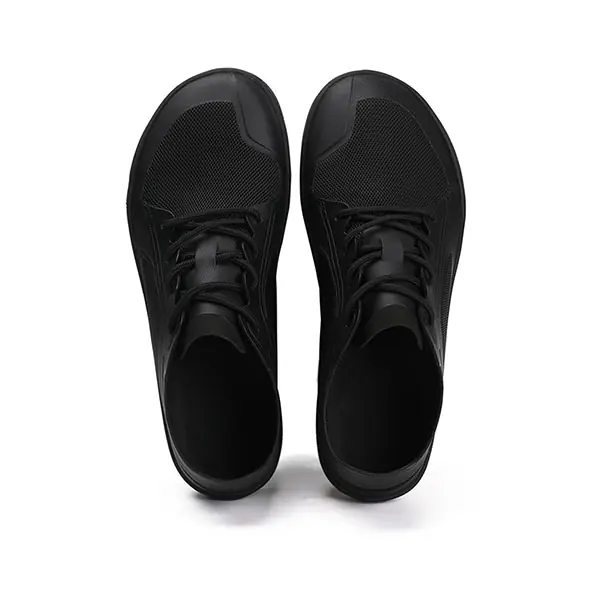
Are Crocs Barefoot Shoes
In recent years, barefoot shoes have surged in popularity, promoting natural foot movement and healthier feet. Among the myriad of options available, Crocs have sparked conversations about their suitability as barefoot footwear. This article delves into whether Crocs can truly be considered barefoot shoes, exploring their features, benefits, and how they compare to other options in the barefoot shoe market.
Table of Contents
Understanding Barefoot Shoes
Barefoot shoes aim to mimic the natural movement of the feet, providing minimal interference between the foot and the ground. They typically feature a thin sole, wide toe box, and flexible materials, allowing the feet to move freely. The primary goal is to enhance good feet health by promoting natural gait and strengthening foot muscles.
Key Features of Barefoot Shoes
- Zero Drop Sole: The heel and forefoot are at the same level, promoting a natural stance.
- Wide Toe Box: Allows toes to spread naturally, enhancing balance and stability.
- Minimalist Design: Reduces unnecessary bulk, enabling better ground feel.
- Lightweight Materials: Facilitates natural foot movement and reduces fatigue.
| Feature | Description |
|---|---|
| Zero Drop Sole | Eliminates height difference between heel and forefoot. |
| Wide Toe Box | Provides ample space for toes to splay naturally. |
| Minimalist Design | Ensures the shoe is lightweight with minimal structural interference. |
| Flexible Materials | Allows the shoe to bend and move with the foot’s natural motion. |
What Are Crocs?
Crocs are known for their lightweight, comfortable, and casual footwear. Originally designed for boating, Crocs gained popularity for their unique croslite material, which offers cushioning and flexibility. Available in various styles, Crocs are favored for their easy slip-on design and vibrant colors.
Popular Crocs Styles
- Classic Clogs: Iconic design with ventilation holes for breathability.
- Barefoot Shoes: A newer addition aimed at mimicking barefoot feel.
- Sandals: Open-toe designs for summer wear and water activities.
ALT
Are Crocs Designed for Barefoot Fitness?
While Crocs offer comfort and flexibility, they are not specifically designed as barefoot shoes. Their thicker soles and lack of a zero drop design distinguish them from traditional barefoot footwear. However, some models aim to provide a more natural foot movement experience.
Differences Between Crocs and Traditional Barefoot Shoes
- Sole Thickness: Crocs have thicker soles compared to the thin soles of barefoot shoes.
- Drop: Crocs typically have a higher heel-to-toe drop than zero-drop barefoot shoes.
- Material: Crocs use proprietary croslite material, whereas barefoot shoes use lightweight, breathable fabrics.
| Feature | Crocs | Traditional Barefoot Shoes |
|---|---|---|
| Sole Thickness | Thicker cushioning | Thin, minimal cushioning |
| Drop | Higher heel incline | Zero drop |
| Material | Croslite proprietary material | Breathable, flexible fabrics |
| Design Purpose | Casual, versatile wear | Promotes natural foot movement |
Comparing Crocs to Other Barefoot Shoes
When evaluating barefoot shoe guides, it’s essential to compare Crocs with other brands like Vivobarefoot or Barefoot Sandals. Brands like Vivobarefoot Ultra Bloom focus on providing ultra-thin soles and wide toe boxes, which are crucial for a true barefoot experience.
Performance Comparison
| Aspect | Crocs | Vivobarefoot Ultra Bloom | Barefoot Sandals |
|---|---|---|---|
| Sole Flexibility | Moderate flexibility | High flexibility | High flexibility |
| Foot Protection | Good for casual protection | Minimal protection | Minimal to moderate protection |
| Versatility | Highly versatile for various settings | Best for running and outdoor use | Best for warm weather and water |
| Price Range | Affordable | Mid to high range | Mid range |
Benefits of Wearing Barefoot Shoes
Embracing barefoot shoes can lead to numerous health benefits for your feet and overall body.
Health Advantages
- Strengthens Foot Muscles: Encourages muscles to work harder, enhancing foot strength.
- Improves Posture: Aligns the body naturally, reducing strain on the back and joints.
- Enhances Balance: Promotes better stability and proprioception.
“Wearing barefoot shoes can transform the way you move, providing a more natural and healthy gait.” – Barefoot Shoes Expert
Potential Drawbacks of Crocs as Barefoot Shoes
While Crocs offer comfort, there are drawbacks when considering them as barefoot shoes.
Limitations
- Insufficient Ground Feel: Thicker soles reduce sensory feedback from the ground.
- Lack of Zero Drop: Higher heel can disrupt natural posture and gait.
- Limited Durability for Athletics: Not ideal for high-intensity activities requiring robust support.
Customer Experiences with Crocs as Barefoot Shoes
Feedback from users highlights mixed experiences regarding Crocs’ suitability for barefoot activities.
Positive Reviews
- Comfort: Many appreciate the lightweight and cushioned nature.
- Ease of Use: Slip-on design is convenient for everyday wear.
Negative Reviews
- Lack of Natural Feel: Some users miss the direct ground contact.
- Style Limitations: Not all styles cater to active barefoot enthusiasts.
Sustainable and Health Aspects of Barefoot Shoes
Sustainability is a growing concern in the footwear industry. Barefoot shoes often use eco-friendly materials, promoting both good feet health and environmental responsibility.
Eco-Friendly Materials
- Recycled Fabrics: Utilized in soles and uppers to reduce waste.
- Natural Rubber: Offers durability and biodegradability.
How to Choose the Right Barefoot Shoes for You
Selecting the perfect barefoot shoes involves understanding your needs and preferences.
Factors to Consider
- Fit and Comfort: Ensure adequate space for toes and a snug heel fit.
- Sole Thickness: Choose based on your activity level and terrain.
- Material: Opt for breathable and flexible materials.
- Style: Select a design that suits your lifestyle, whether casual or athletic.
Top Barefoot Shoe Features to Look For
When browsing shoe lists, certain features indicate a quality barefoot shoe.
Essential Features
- Zero Drop: Promotes natural posture.
- Wide Toe Box: Allows natural toe splay.
- Flexible Sole: Enhances ground feel and movement.
- Lightweight Design: Reduces fatigue during activities.
Barefoot Shoes in Different Lifestyle Settings
Barefoot shoes cater to various activities and settings, from daily wear to specialized sports.
Versatile Uses
- Casual Wear: Comfortable for everyday activities.
- Athletic Activities: Suitable for running, training, and outdoor sports.
- Water Activities: Ideal for swimming or beach outings with barefoot sandals options.
Maintenance and Care for Barefoot Shoes
Proper upkeep ensures the longevity and performance of your barefoot shoes.
Care Tips
- Regular Cleaning: Wash with mild soap and water.
- Avoid Harsh Conditions: Protect from extreme temperatures and rough terrain.
- Store Properly: Keep in a cool, dry place to prevent material degradation.
Latest Barefoot Shoe News and Trends
Staying updated with the barefoot shoe news helps you make informed choices about the latest advancements and trends.
Current Trends
- Sustainable Practices: Increased focus on eco-friendly materials.
- Innovative Designs: Enhanced ergonomics and aesthetics.
- Technological Integration: Incorporation of smart features for performance tracking.
Vivobarefoot Ultra Bloom: A Closer Look
One standout in the barefoot shoe market is the Vivobarefoot Ultra Bloom. Renowned for its ultra-thin sole and wide toe box, it exemplifies the barefoot shoe ethos.
Key Features
- Breathable Upper: Ensures ventilation and comfort.
- Durable Sole: Offers protection without compromising flexibility.
- Stylish Design: Combines functionality with modern aesthetics.

Finding the Best Barefoot Sandals
For warmer climates or casual outings, find barefoot sandals that provide the benefits of barefoot shoes with the openness required for summer wear.
Recommended Styles
- Adjustable Straps: Ensure a secure and comfortable fit.
- Flexible Soles: Maintain ground feel while offering protection.
- Lightweight Materials: Enhance comfort and ease of movement.
Barefoot Shoe Guides: Your Path to Healthier Feet
A comprehensive barefoot shoe guide assists in navigating the myriad of options available, ensuring you select shoes that align with your foot health goals.
Step-by-Step Selection
- Assess Your Needs: Determine the primary use of the shoes.
- Measure Your Feet: Ensure accurate sizing for comfort.
- Research Brands: Look for reputable brands with positive reviews.
- Try Before You Buy: Whenever possible, test the shoes for fit and comfort.
Incorporating Barefoot Shoes into Your Daily Routine
Transitioning to barefoot shoes requires gradual inclusion into your daily activities to allow your feet to adapt.
Tips for Integration
- Start Slowly: Wear them for short periods initially.
- Listen to Your Body: Pay attention to any discomfort or pain.
- Strengthen Your Feet: Engage in exercises to build foot strength and flexibility.
The Science Behind Barefoot Footwear
Research supports the benefits of barefoot footwear in promoting natural foot mechanics and overall health.
Key Studies
- Improved Posture: Studies show barefoot shoes can improve spinal alignment.
- Enhanced Foot Muscle Activity: Barefoot shoes encourage activation of intrinsic foot muscles.
Comparing Cost and Value: Crocs vs. Barefoot Brands
When evaluating the cost and value, it’s essential to consider the features and benefits offered by Crocs compared to specialized barefoot brands.
Price Analysis
| Brand | Average Price Range | Features Offered |
|---|---|---|
| Crocs | $$ | Comfort, versatility, casual wear |
| Vivobarefoot | $$$ | Zero drop, sustainable materials, athletic |
| Barefoot Sandals | $$ | Breathable, flexible, lightweight |
Customizing Your Barefoot Shoe Experience
Personalizing your barefoot shoes can enhance comfort and functionality.
Customization Options
- Adjustable Straps: For a tailored fit.
- Color Choices: Express your personal style.
- Accessory Add-ons: Attachments like insoles or cleats for specific activities.
Conclusion: Are Crocs the Right Choice for Barefoot Enthusiasts?
While Crocs offer unparalleled comfort and versatility for casual wear, they fall short of being true barefoot shoes. Their thicker soles and higher heel drop contrast with the key features of barefoot footwear aimed at promoting natural foot movement and health. However, for those seeking comfort in everyday settings without the strict requirements of barefoot shoe design, Crocs can be a suitable option.
For dedicated barefoot enthusiasts seeking maximum benefits for good feet, exploring specialized brands like Vivobarefoot or dedicated barefoot sandals may offer more aligned features. Ultimately, the choice depends on your specific needs, lifestyle, and commitment to foot health.
FAQs
Are Crocs suitable for running?
While Crocs provide comfort, they are not designed for running. For running, it’s recommended to choose shoes with thinner soles and better ground feel, like those from specialized barefoot brands.
Do Crocs promote good foot health?
Crocs offer comfort and flexibility but lack some features essential for optimal foot health, such as a zero-drop sole and wide toe box, which are prevalent in barefoot shoes.
How do barefoot shoes differ from regular shoes?
Barefoot shoes have minimalistic designs with features like zero-drop soles, wide toe boxes, and thin flexible soles to promote natural foot movement, unlike regular shoes that often provide more support and structure.
Can children wear Crocs as barefoot shoes?
While Crocs are comfortable for children, they do not offer the same benefits as barefoot shoes. If promoting natural foot development is a priority, consider opting for specialized barefoot shoes designed for kids.
What are the best barefoot sandals available?
There are several excellent barefoot sandals on the market. Look for options with adjustable straps, flexible soles, and durable materials to ensure both comfort and functionality.
How do I transition to barefoot shoes from regular shoes?
Start by wearing barefoot shoes for short periods, gradually increasing the duration as your feet adapt. Incorporate foot-strengthening exercises and listen to your body’s signals to prevent discomfort.
For more information on finding the perfect barefoot shoes, explore our Men’s Barefoot Shoes and Women’s Barefoot Shoes collections.
